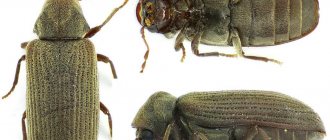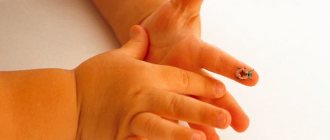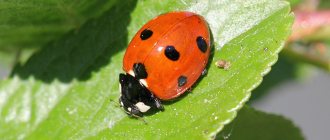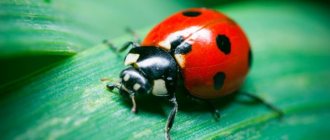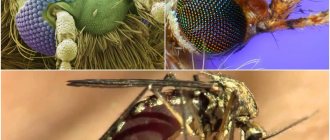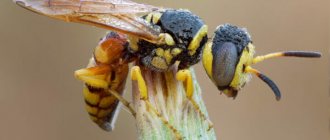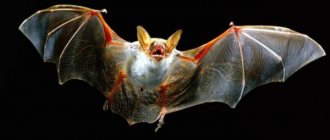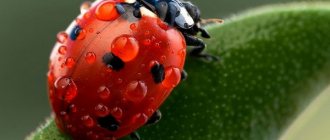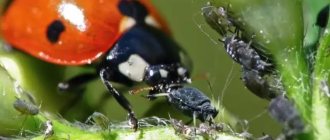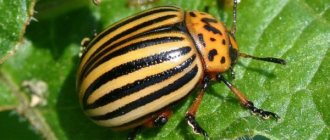How birds sleep
Birds that spend the night not in tree branches practically sleep standing up.
Why don't they fall to the ground? Birds have a long tendon, about the same length as the bird's leg, connected to a strong muscle. When the bird sits, the tendon stretches, acts on the fingers, and they compress, covering the branch. Many birds sleep with their heads tucked under their wings and their feathers raised to protect them from the cold. Herons and storks often sleep standing on one leg. Some parrots in South America sleep in an original way. They hang upside down, clinging to a branch with one leg. Some swifts sleep in a large ball.
Bird sleep is associated with some special metabolic issues. In birds, metabolism is very intense. The normal temperature of birds is 42 C, that is, the temperature that a person experiences only with a serious illness. During sleep, chemical processes in the birds' bodies slow down, and body temperature drops to 20 C.
Many water birds sleep "float". Often ducks and swans are captured by ice: while they sleep, the water around them freezes. Seagulls also sleep on the water. They claim that they can fall asleep for a short time during flight. The ability to sleep in flight is also attributed to birds that can make long flights, such as albatrosses. This may be true, but albatrosses undoubtedly spend most of their sleep on the water. Some animals sleep underwater.
What does a ladybug look like?
Today, no more than 200 insect formations have been studied on the planet, but the number of species is limitless. The ladybug is a representative of the coccinellid family, has over 4000 types and 360 genera, belongs to the order Coleoptera of the arthropod type. A distinctive feature from other relatives are the seemingly three-part legs. This is due to the small third segment, which is visually hidden with half of the fourth pedicle in the sinus of the bilobed process.
The average size of a ladybug is from 4 mm to 10 mm. The structure of the body is rounded, ovoid, flattened below and convex above. Sometimes the surface is covered with thin fibers. Consists of a head, pronotum, and chest, which is divided into three parts:
- paws;
- abdomen;
- wings with wing covers.
The head is monolithically connected to the prothorax, everything looks like an enlarged cephalothorax. It makes up the main part of the body length, sometimes found in an elongated oval shape. The eyes are relatively large. The antennae are well flexible and consist of 8-11 segments.
Has rigid expressive elytra. Essentially these are the front flight organs. Over time, the ladybug's wings transformed. On the ground they perform a protective function. With the help of two rear processes, it flies, and it turns out quite well. An interesting fact is that various birds and many vertebrates are hesitant to hunt it. They don’t have time to catch it, because the insect makes about 85 strokes per second.
Why or what does a ladybug mean?
But why does the insect have such an unusual name? There are many versions. First, let's talk about the origin of the word "god's".
Firstly, there is a connection with the legends described above. If a ladybug lives in the sky, then it is definitely a divine creature, there are no others there. If the ladybug is the ex-wife of the god Perun, then she is also “ladybug”, belonging to the deity.
Secondly, the word “God’s” is explained by the peaceful disposition and trustfulness of the bug towards humans. Something like “Grandma is God’s dandelion.”
Regarding the word “cow”, some language experts believe that it was transformed from the word “loaf”. In its shape, the insect really resembles a loaf of bread, which every housewife in Rus' used to bake.
Another option is that the color of the insect is similar to the spotted color of cows, the phlegmatic character also corresponds to a leisurely animal and, finally, the bug also produces milk. Even if it’s inedible and from the knees.
Origin of the species and description
Photo: Ladybug
The ladybug is a very common ancient arthropod insect all over the world, a representative of the order Coleoptera and the ladybird family. This insect received its scientific name Coccinellidae due to its scarlet color. The bug lives almost everywhere. It was popularly nicknamed the ladybug because of the poisonous white liquid or “milk” that the insect secretes to scare away predators, and the ladybug because it helped in the fight against aphids and other pests to preserve the harvest, had a gentle disposition, and did not cause any harm to humans. .
Video: Ladybug
In Germany and Switzerland, the tiny insect is called St. Mary's bug, in South America - St. Anthony's ladybug. There were many legends about this little bug; it was said to have the ability to influence the weather.
There are a huge number of varieties of ladybugs: the entire family has more than four thousand species, which in turn are divided into 7 subfamilies and 360 genera. The ladybug differs from other representatives of the family Coccinellidae in the structure of its legs. In the structure of each of them there are three visible and one hidden segment, so they seem to be three-component.
Lifestyle
Representatives of yellow and red ladybugs have the same size up to 12 mm . Any insect of this species has hard elytra. Their main function is to protect the second pore of the wings during flight. Both red and yellow ladybugs are excellent flyers. Their wings beat up to 85 times per second. Also, during the course of evolution, these little bugs have learned one clever trick. In case of danger, they pretend to be dead by pressing their paws. Yellow ladybugs live for more than a year. Nature measured out the same amount of time for her red sister.
Types of ladybugs
The ladybug is not necessarily red, but its coloring is in the form of dots. The dots may be absent altogether, and instead of them, stripes, patterned spots, or comma-shaped spots may appear on the shell. The most common type is the seven-spotted beetle. It lives almost throughout Europe, its dimensions reach 7 mm, the elytra are burgundy, there are two light-colored spots at the base, one dark one can be seen on the pronotum, with speckles on the elytra.
They are also divided according to the number of dots and color:
- two-spotted, usually 5mm dark scarlet individuals with 2 large black markings;
- duodenal up to 6 mm, have pinkish elytra, on which 6 pieces are observed;
- thirteen-spotted up to 7mm, with brownish wings;
- fourteen-spotted - with a yellow color and black spots on them or vice versa;
- seventeen-point identical colors measuring from 2.5 to 3.5 mm;
- variable, with a black pronotum with 2 brownish spots, contrasting markings at the base of the yellowish-red elytra;
- blue ones are found on the Australian mainland and have a beautiful tint of blue and green tones;
- white or light gray - up to 15 marks, less common, like brown plain ones.
Types of ladybugs, names and photos
The large family of ladybirds includes more than 4,000 species, divided into 7 subfamilies, which include approximately 360 genera.
The most interesting varieties of ladybugs:
- Two-spot ladybird (Adalia bipunctata)
A beetle with a body length of up to 5 mm, dark red elytra and two large black spots. The prothorax lacks an anterior carina. The pronotum is black and has a yellow lateral border.
- Seven-spotted ladybird (Coccinella septempunctata)
The most common ladybug in Europe. The size of a ladybug reaches 7-8 mm. The elytra are colored red; they have one small white spot (at the base) and three large black spots. The seventh spot of the ladybug is located on the pronotum (scutellum).
- Twelve-spotted ladybug (Coleomegilla maculata)
The insect is 6 mm long and has pink or red elytra with 6 spots on each of them.
- Thirteen-spotted ladybird (Hippodamia tredecimpunctata)
The dimensions of the elongated body of adult individuals range from 4.5 to 7 mm. The elytra of the ladybug are colored red-brown. There are 13 spots on them, some of which merge with each other.
- Fourteen-spotted ladybird (Propylea quatuordecimpunctata)
It has yellow or black elytra with black or yellow dots.
- Seventeen-spotted ladybird ( Tytthaspis sedecimpunctata )
The insect's body is 2.5-3.5 mm long. Usually its color is bright yellow, sometimes it can be darker. These beetles live in Europe.
- Asian ladybug (Harmonia axyridis)
The beetle has a body length of up to 7 mm. Within the species there are two subspecies. One of them has yellow wing covers with black spots, both large and small. The prothorax is white with a dark pattern. The second subspecies is characterized by black coloration of the elytra, on which red-orange spots are clearly visible. The prothorax is black with light yellow spots. This type of ladybug has 19 spots.
- Ladybug (Hippodamia variegata)
Body size up to 5.5 mm. The pronotum is black and has two yellow spots. On the yellow-red elytra, 6 dark spots of various shapes and 1 large spot near the scutellum are clearly visible. The edges of the black pronotum are framed by a yellow border.
- Ladybug (Anatis ocellata)
Quite a large insect with a body length of up to 10 mm. The color of the head and pronotum of this species of ladybug is black with small yellow spots. The elytra are yellow or red, each of them has black spots surrounded by lighter rims.
Character and lifestyle of the ladybug
Ethnologists have observed how ladybugs gather in flocks in spring or autumn and go on long journeys.
Thus, the beetles are poisoned to spend the winter and return back in the spring. Almost like migratory birds.
They are forced to make unsafe long-distance flights in search of food. Mowed fields or meadows deprive cows of food, and they look for other places where there are still a lot of aphids.
Ladybugs fly so high above the ground that they may not be visible to the naked eye.
Sometimes, due to a strong gust of wind, the beetles leave the distance and interrupt their flight, and in some cases, flying over the sea, they die without ever seeing the shore.
Some cows gather in large flocks at the edges of the forest and prepare for the winter. Under a thick layer of leaves, under the bark of old stumps, they will shelter from frost until late spring.
While in wintering areas, ladybugs begin to show little activity and even appear on the soil when the average daily temperature rises to 5 degrees Celsius.
When the temperature reaches 10 degrees, some of the beetles from the forest-steppe fly to winter seedlings, to favorite perennial grasses and to abandoned virgin lands.
House cricket (house cricket) - description, appearance, characteristics.
House crickets are fairly small insects. The size of the slender, slightly flattened body, covered with a hard chitinous shell, in adult individuals ranges from 16 to 26 mm in length. The color of the domestic cricket can be grayish-yellow, straw-fawn or various shades of brown with streaks, specks or spots of indeterminate shape.
On the head of the cricket, which resembles a flattened egg in shape, 3 dark arcuate stripes are clearly visible. The small eyes located on its sides have a complex facet structure. The mouthparts of crickets are of the gnawing type in structure. The antennae, consisting of several segments, are an organ of touch. Often their size is slightly greater than the length of the cricket's body.
The rear pair of well-developed membranous wings helps house crickets easily fly from place to place. At rest, the cricket's wings lie along the abdomen and resemble long, sharp tails. If necessary, house crickets can travel quite long distances. When the insect is on the ground, its wings are reliably protected from damage by dense elytra that lie flat on the back, with the right one slightly overlapping the left.
Like all orthoptera, the house cricket has 3 pairs of legs. The hind legs have thickened thighs and are designed to perform fairly long jumps. It is noteworthy that the hearing organs of these insects are located on the shins of the front pair of legs. The paired appendages located on the last segment of the abdomen are quite long and resemble peculiar antennae sticking out in different directions.
Sexual dimorphism is expressed in the presence of a special sound apparatus in male crickets, which is similar in structure to the sound apparatus of grasshoppers, but differs from it in greater complexity and a different arrangement of components. The stridulatory vein, which functions as a closure, is located on the right elytra, and the vein against which it rubs is located on the left elytra. When they rub against each other, the familiar trill of a cricket appears. In crickets, the sound apparatus is more developed and occupies a larger area than in grasshoppers.
Female crickets have an ovipositor at the very end of their abdomen, shaped like a spear. Its length ranges from 11 to 15 mm. With the help of this organ, females dig holes in the soil into which fertilized eggs are laid.
The average lifespan of a house cricket rarely exceeds 3 months.
Signs about the ladybug
Due to its characteristic coloring, the ladybug cannot be confused with other bugs. The colorful insect evokes optimistic thoughts among all the peoples of Europe.
In this part of the world there are no signs about ladybugs, probably because these insects are not common there.
Superstitions about ladybug:
- The Germans call it the Holy Virgin beetle or “God’s candle.”
- The English call it Mary's bird.
- Argentines call it St. Anthony's cow.
- Bulgarians recognize her as “God’s beauty”.
- People of the Catholic faith endow this insect with mystical gifts.
- Representatives of the Saxon peoples consider the cute bug to be the bearer of Fortune and a sign of heaven's favor.
- The French are ardent fans of amulets in the form of a cute bug. Such amulets are irreplaceable for newborns, whom God’s creatures protect from the evil eye and warn of danger.
- In central Europe, people associate this insect with God; all signs require a caring attitude towards this unusual creature.
- The pagans considered the red bug to be the messenger of the Sun.
- Christians revered the ladybug as a servant of the Virgin Mary.
There are many good signs about the harmless, beautiful bug. The bearer of God's will promises good luck by his appearance. Killing a sacred creature is prohibited and is considered a great sin. Anyone who violates the ban may be deprived of Fortune's favor. You can see ladybugs of different colors. Each case has its own signs:
- Yellow is the bearer of happiness, positivity, long-awaited changes.
- Red with white spots is an omen of receiving a message that will please you.
- Black with red spots is a rare species (not found here), a sign of success in business.
The number of dots used to be used to judge the age of an insect, but nowadays a new sign has appeared: how many inclusions are on the wings of a bug seen, so many favorable months are expected in a year.
You need to let go of the insect and wish yourself happiness and prosperity. It turned out that such fortune-telling was not enough, and additional signs arose:
- A bug without dots is a newborn creature, predicting the appearance of a baby in the family of the one who met such a living creature.
- With two spots - is a symbol of good luck in entrepreneurship. After such a meeting, you should think about starting your own business.
- 7 dots - the happiest beetle.
It has been noticed that God’s creatures choose the most environmentally friendly areas to live, which is a sign of the absence of environmental pollution. Many ladybugs in one place are a symbol of a large and friendly family, and for a farmer this means a harbinger of a large rye harvest.
Bad omens:
- Witnessing the death of a ladybug means disaster. For example, a brightly colored insect gets caught in a spider's net, or a bird attacks a bug. You need to try to save the insect - then misfortune can be avoided.
- A ladybug bite could mean that she didn't like your scent, or there is an ill-wisher spreading dirty gossip about you in order to get around you on the way to a good position.
The yellow liquid that the insect secretes is called jelly. That is why the insect is called a “ladybug”. All nations believed that this yellow mucus was the food of the gods, so healers began to use milk to treat toothache.
The yellow liquid that the insect secretes is called jelly.
Why does a ladybug land on a person?
Sometimes a pleasant event occurs that predicts good luck in various areas of life. If a ladybug lands on you, the omen takes on different meanings depending on where exactly the charming bug ends up.
On your head
Signs say that a bright insect on the forehead is a good sign for work. A career take-off, a positive outcome from an unpleasant situation in the work team, and rapid development of your own business are expected.
Any difficulties are now easily overcome, and ill-wishers are not scary. The main thing is not to brush the “messenger of good luck” to the ground in fear, so that success does not pass you by
It is important in which zone the bug is located:
- Signs promise a meeting with true love for people who have had a ladybug land on their face. They will receive the desired new impressions, or established relationships will shine with new colors.
- A cute insect on the top of the head portends an interesting job for a manager, a higher step on the career ladder, or the acquisition of people management skills.
- A bug lost in the hair is a signal for a businessman: you can actively develop your entrepreneurial activity.
Don’t scare the “guest”, put your hand up - the bug will crawl onto your fingers, and from there it can “start” upward.
On hand
If a ladybug sits on your right hand, pleasant events await you (your cherished wish will come true), if on your left forearm, changes will affect the most valuable area of life - health (it will noticeably improve).
Another version of the interpretation of the sign. The hand is a human organ that is associated with making a profit (“hold in hands”, “give in hands” and the like).
On the other hand, most things are done with hands, so this part of the human body symbolizes success in all endeavors. Therefore, if a ladybug sits on the left hand, this portends good luck in the field of finance, if the bug is located on the right palm, this guarantees the successful completion of any projects.
With the help of a ladybug landing on your hand, you can tell fortunes:
- Ask about your concerns and gently blow under the beetle's wings. If it takes off immediately, it means that the problem will not be solved for long. If the “guest” remains sitting on the hand, then the wish will not come true, or its fulfillment will take a while.
- You can guess the weather in the same way. If the little red bug doesn’t take off from your palm for a long time, it means it’s raining; it leaves immediately – clear weather is expected.
- For the girl, the little messenger of the gods will predict where to expect her betrothed. To do this, before blowing on the bug, you need to ask it to show the direction. And when the insect takes off, watch its flight. In which direction the ladybug goes, matchmakers will have to wait from there. If the red bug remains sitting on the palm, you can’t count on marriage in the near future.
- If a girl holds a ladybug in her closed fist (so as not to crush or damage the insect), and then opens her palm, the behavior of the bug will show her betrothed. If the insect flies literally vertically upward, then the groom may be standing nearby.
- If a ladybug lands on your upper limb, you can ask her for help in finding mutual love. Is the insect already on your hand? Count to 22. If the insect does not fly up before the count is completed, a decent life and happy love awaits you.
By holding the messenger of heaven on her hand for a longer time, the girl can count on the bug to give her the power with which she can quickly find her groom.
A ladybug on the shoulder foreshadows joyful events, for example, a meeting with a friend or help from a person who was not previously considered close (the shoulder symbolizes friendly support).
Folk omens categorically do not recommend shaking off God’s creation with your second hand (this way you can brush off your luck with your own hands).
Folk signs categorically do not recommend shaking off God’s creation with your second hand
To make your wish come true, according to the signs, you need to raise your finger up (the insect will reach the highest point and fly away). Another option is to carefully transplant the bug onto a high branch.
On the body
It happens that a ladybug sits on the head and then moves through clothes or various parts of the body. In such a situation, signs promise different events depending on the place where the insect is located:
- On the chest - soon you will find your soul mate. Happiness in love is guaranteed.
- On the back - a speedy resolution of long-standing problems.
- On the leg - quickly achieving your goals (if the bug crawled to the end of the leg). If the insect stops in the middle of the limb, you should not expect quick changes.
If a bug just crawls on your clothes, you can expect a pleasant surprise from a loved one. You may receive a present.
Legends about ladybug
According to an ancient legend, ladybugs do not even live on earth, but in the sky. And when they need to convey a message from heaven to someone, they come down to people.
Hence the children's saying, which is said when a ladybug lands on your hand: “Ladybug, fly to the sky, where your children eat candy.” That is, her children live in heaven! They are waiting there for their mother, who has set off on a long journey with an important errand.
According to another legend, the Slavic thunder god Perun caught his wife in the act, meaning there was no reason to doubt her infidelity. He was seriously angry and, as punishment, turned the woman who had stumbled into a red insect, so that everyone would still notice the traitor from afar, so that she could not hide from shame among the green nature.
Moreover, Perun was so angry and offended that he could not resist and threw lightning at the traitor as a farewell. Seven times. These lightning strikes left scorched marks on the bug's back - seven spots.
Growing at home
Not all insects in natural conditions can withstand the cold. It's the same with bugs living in an artificial environment. Therefore, if you decide to start growing them, get pets in the spring. The chances that your insects will be healthy and viable will increase. Moreover, with the arrival of the first warm days, the activity of beetles is not yet high, they stay in groups, and it is not difficult to collect them.
A house for ladybugs can be a plastic terrarium with a lid, a plywood box with slots for air circulation, or a wooden cage with a covered top.
Dry leaves, small branches or wood shavings should be placed at the bottom of the box. In such conditions, the insects will be comfortable, they can live for several months, overwinter, and begin to mate in the spring.
Some gardeners and businessmen raise ladybugs at home in transparent plastic containers, make very small holes in the lid, or cover them with gauze or mosquito net and feed them with a mixture of yeast and sugar. Why do they do this? To then release them on your site to combat aphids or for sale to other gardeners.
To create comfortable conditions for the life and reproduction of ladybugs, small plants are planted in their housing, which are populated by aphids, so the ladybug finds itself almost in a natural habitat, can hunt and lead an active lifestyle. In captivity, ladybugs reproduce better than in nature, and at the same time, adult individuals remain living with their faces at the same time.
Ladybugs are insects popular due to their bright colors. The best habitat for ladybugs is the wild, but if you are lucky enough to find an insect near your home and want to take care of it, it is not difficult to do so - provide the ladybug with food, water and recreate the natural conditions of its habitat.
Habitat
The habitat of ladybugs covers the entire globe, except Antarctica and permafrost zones.
Some types of insects live only on plants densely populated by aphids, others choose reed grass and sedge growing on river banks, and still others require exclusively field grass for normal life.
As a rule, these cute beetles live separately and gather in groups only for the winter or during the mating season.
The ladybug is very thermophilic, so when cold weather sets in, the bugs fly away in groups to warm regions for the winter. There are also sedentary varieties of ladybugs; they wait out the frosts, gathering in numerous groups. Such a group can number up to 40 million beetles. They take refuge in stones, fallen leaves, and tree bark.
The lifespan of an insect is short. If there is no lack of food, then their life reaches one year, with a lack of food - several months.
Ladybug - description of the insect, structure, characteristics, photo.
The size of the ladybug ranges from 4 to 10 mm. The body shape of insects is almost round or elongated oval, flat below and highly convex above. Its surface in some species of ladybugs is covered with fine hairs. The body structure of ladybugs includes a head, a pronotum, a thorax consisting of three sections, three pairs of legs, an abdomen, and wings with elytra. The insect's head is small, motionlessly connected to the prothorax and, depending on the species, may be slightly elongated. The ladybug's eyes are relatively large. The antennae, consisting of 8-11 segments, are highly flexible.
The pronotum of the insect is convex, transverse in structure, with a notch on the anterior edge. Often there are spots of various shapes on its surface. In contrast to the prothorax and mesothorax, which are extended across the body of the insect, the shape of the metathorax resembles an almost perfect square.
In total, ladybugs have 6 legs, which are of moderate length. In the structure of each insect leg there are three obvious and one hidden segment. With their help, the insect can move quite quickly along the grass or plant stems. The abdomen of ladybugs consists of five to six segments, covered from below by sternites (segmental semirings).
Ladybugs fly using their two hind wings. In the process of evolution, the front wings of the ladybug were transformed into hard elytra, which serve as protection for the main pair for the period while the ladybugs are on the ground.
As a defense against predators such as birds, ladybugs secrete cantharidin, a toxic yellow liquid that has an unpleasant odor. In addition, the bright colors of the cow also scare potential enemies away from it.
The color of the ladybug's protective covering can be bright red, rich yellow, black, dark blue or brown with spots of black, yellow, red or white in various configurations. In some types of ladybirds these spots can merge into abstract patterns, while in others they are completely absent. Often the pattern on the pronotum is a sign by which the sex of a ladybug can be distinguished.
Almost no animal or insect is capable of harming members of the family. However, there is an enemy against which the bright color and poisonous hemolymph of ladybugs are powerless. These insects are called dinocampus. They choose places to lay their eggs in the bodies of pupae or adult ladybugs. During the development process, parasites destroy their host.
Why is the ladybug red?
The grasshopper is green to make it harder for predators to spot it in green grass. And the ladybug is red or orange. It is immediately visible to birds in the green grass.
How is it that ladybugs don’t have protective colors?
The ladybug is an arthropod insect that belongs to the order Coleoptera, the ladybird family (lat. Coccinellidae).
The ladybug received its scientific name due to its unusually bright color - the Latin word “coccineus” corresponds to the concept of “scarlet”. And the common nicknames given to the ladybug in many countries around the world speak of people’s respect and sympathy for this insect. For example, in Germany and Switzerland it is known as the “Virgin Mary’s bug” (Marienkaefer), in Slovenia and the Czech Republic the ladybug is called “Sun” (Slunecko), and many Latin Americans know it as the “St. Anthony’s bug” (Vaquita de San Antonio).
The origin of the Russian name for ladybug is not exactly known. Some researchers are inclined to believe that this is due to the ability of the insect, in case of danger, to secrete “milk” - a special liquid (hemolymph). And “God’s” means meek, harmless. Others believe that these insects received the nickname “ladybugs” because they destroy aphids and help preserve crops.
So why is she so bright?
Unlike the grasshopper, it is well protected because it is tasteless and even poisonous. But young birds, who have never tasted a ladybug, do not know this. And out of ignorance they try to peck the ladybug. Then, of course, the bird spits, repents of its action and thinks: “I won’t peck such bugs anymore!” But our bug has already died. True, he did not die in vain: at the cost of his life, he taught the bird that it is better not to touch ladybugs. He saved the lives of other ladybirds, including his brothers, sisters, children and grandchildren. This is why it is beneficial for ladybugs to be bright and memorable. If they were dull, faded, little different from thousands of other (tasty) bugs, if they were difficult to remember and learn to distinguish from other bugs, then each bird in the process of “learning” would kill many ladybugs. The bright coloring of the ladybug is needed so that the birds learn the lesson faster.
If a mutant cow appears, duller than its fellow birds, then its life will be in great danger, because the bird will think: “Maybe this is not a ladybug, it’s kind of dull, I’ll try to peck at it.” And if a mutant ladybug appears with the same pattern, but even brighter, then such a beetle can gain an advantage, because the birds will shy away from it, thinking: “This is a ladybug, so bright!” This is how random mutations and natural selection create warning colors in animals. The nature of such coloring depends primarily on how the thinking and memory of predators works, which colors and patterns attract their attention better and are remembered faster.
Source
What does a ladybug look like?
The ladybug looks quite small. The size of the ladybug reaches a length of 4 to 9 mm. The ladybug looks recognizable, because most often it is colored red and strewn with black dots. The ladybug has a convex, almost round body. The ladybug looks interesting, because there are so many small details in the structure of its body.
The ladybug insect has a head, pronotum, chest, abdomen, wings with elytra and paws. The ladybug has a small and short head, which is motionlessly connected to the pronotum. On the head of the insect there are eyes and movable antennae. The ladybug beetle flies using a pair of hind wings. The ladybug's forewings are rigid elytra that protect the main wings while it is on the ground. The ladybug flies well and makes up to 85 wing beats per second.
Everyone knows that the ladybug looks so bright to scare away predators. In addition to the variegated colors, the ladybug also secretes a yellow liquid with a sharp, specific odor. This liquid is poisonous and serves as protection against frogs, spiders and other potential enemies. The ladybug beetle secretes its poisonous liquid from the joints of its legs in case of danger. Also, when in danger, an insect can even pretend to be dead.
Of course, the red ladybug is not the only color option for this insect. There is a yellow ladybug, a black ladybug and even a white ladybug. What a ladybug looks like and what color it will be depends on the type of ladybug. At the same time, young individuals have the most saturated color; in older individuals, it fades over time.
Why does the ladybug need such a bright outfit?
We are accustomed to thinking that ladybugs are bugs with red or yellow elytra, decorated with seven or five dots. But etymologists say that cows are considered to be those who wear designs on their backs in the form of commas, dashes and even the letter M, and sometimes their backs are covered with intricate patterns.
Why does a little bug need such a bright outfit? It turns out that it is threatening and warning in nature. Nobody will remember the gray beetle, but the ladybug has such a color that everyone recognizes it from afar. The bird will try a bright insect and will not catch it again; it will remember the tasteless bug. Frogs and lizards also do not eat this insect, even spiders, and they refuse such food. A large poisonous spider, the tarantula, lives in Central Asia. But the ladybug is too tough for him. When she crawls to visit the spider, he pushes her out the door, urging the uninvited guest on with blows of his front paws.
The whole secret of the inedibility of ladybugs is in the poison cantharidin, which they secrete in the form of an orange drop. If you inadvertently press the bug with your fingers, it will release a toxic yellow liquid through the channels in its legs. This is not due to his desire, it’s just that the ladybug has such a structure of her knees. As soon as she tightens her legs, liquid comes out. It is a poison that burns the throats of birds and other predators. In addition, the yellow liquid smells unpleasant. The ladybug is very well protected by the poisonous cantharidin. Other beetles even disguise themselves as it in the hope that the birds will not touch them.
Although the ladybug has a peaceful appearance, it is a real predator. Only very few species are herbivorous. Its main food is aphids. A ladybug eats a hundred or even more aphids per day. Therefore, these beetles are excellent defenders of fields, gardens and vegetable gardens, because aphids, which they love so much, are very harmful to plants.
On the underside of the leaf, the ladybug lays orange eggs, and within a week, larvae emerge from them. They are very mobile and are usually dark in color with a yellow or red pattern. It takes about a thousand aphids to fully develop. The more food ladybugs have, the more fertile the females are. On average, she lays 300 eggs.
One type of ladybug, rhodolia (a bright red beetle with a black pattern), is famous for saving citrus plantations in many countries when they were attacked by a terrible pest brought from Australia - the grooved bug, which was not afraid even of hydrocyanic acid. Realizing that chemicals were more likely to destroy trees than pests, people decided to bring rhodolias from Australia, which from time immemorial had been fighting with the grooved bug.
In Japan, where aphids cause considerable damage to fields, ladybugs are raised in the laboratory and then released into the wild. In the USA, after World War II, a company that grew these bugs even existed and flourished. In the summer, farmers who did not want to use pesticides bought ladybugs and used them to fight agricultural pests.
There is a lot that is unclear in the habits of ladybugs. One of the mysteries of these interesting creatures is their gathering for “get-togethers”: from time to time they gather in hundreds and, doing nothing, just sit. On a sunny July day on the shore of Lake Baikal, biologist O. Gusev saw a many-kilometer-long narrow “path” of ladybugs. Observing them, the biologist noted that the beetles, emerging from the taiga, joined the group. After sitting peacefully with their relatives, the ladybugs fly away.
The cute little bug is very useful and indispensable in the fight against agricultural pests. In addition, our ancestors placed a live ladybug in a sore tooth or rubbed a crushed bug on their gums - this is how they tried to relieve toothache. With the help of these bright and cheerful solar creatures, people even saved themselves from measles..
Tags: beetle, ladybug, benefit, insects
